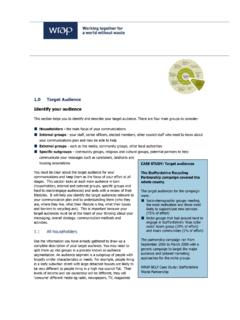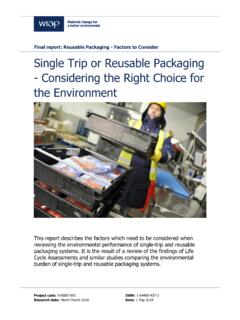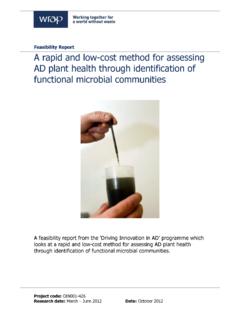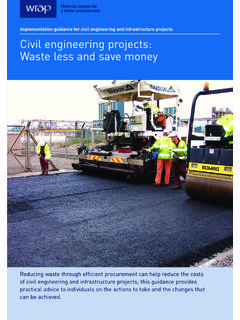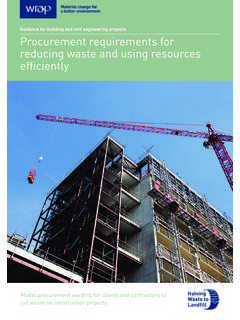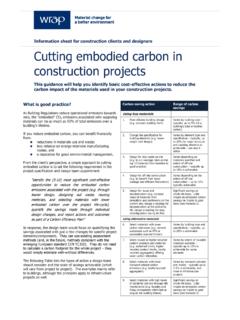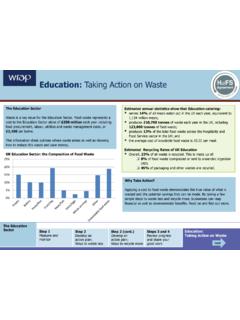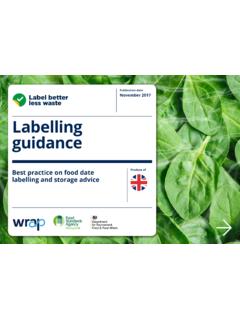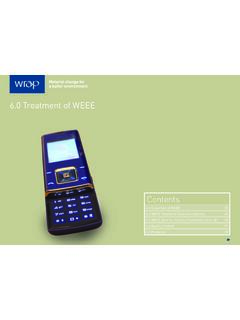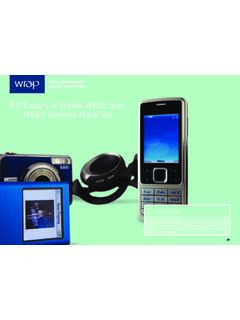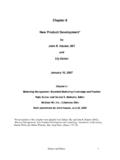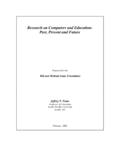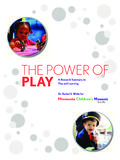Transcription of Rural Community Energy Fund (RCEF)
1 Rural Community Energy fund (RCEF) stage 1 Feasibility Report Checklist (Version ) Version: Page No. 2 Under stage 1 of the Rural Community Energy fund (RCEF), communities receive funding to undertake an investigation into the feasibility of successfully developing a Community scale renewable Energy installation. The results of this investigation must be presented to WRAP in a feasibility report. The strength of the feasibility report will be a key factor in evaluating projects for further funding at stage 2. In order to assist communities in gathering this information and to ensure a consistency of information across multiple projects, we have provided guidance on the aspects to be considered during your feasibility study. The following guidance sets out the basic structure for compiling the feasibility report for stage 1 of the Rural Community Energy fund .
2 You should include all information that is relevant to your project. Report Length: There are no restrictions on report length, but please note that WRAP wishes to only receive information which is of direct relevance to the project. Format: The report should be produced by addressing the sections below. Please answer the specific questions as well as adding any further information that will help assess the viability of taking the project forward to stage 2 and beyond. Please also attach any relevant documents, maps, quotes, surveys, etc., undertaken as part of the feasibility research. Key points to producing a feasibility report: Remember that a feasibility study is a formalised, written approach to evaluating your project, it can help you identify: If your idea is viable or not. Useful facts and figures to aid decision-making.
3 Alternative approaches and solutions to putting your idea into practice. Background Feasibility Report Structure Version: Page No. 3 Outline Structure: Your report should include, as a minimum, the following sections: 1. Executive Summary 2. Community Engagement 3. Community Benefits 4. Technology 5. Financial Projections 6. Planning & Permitting 7. Site 8. Operation and Governance 9. Scheduling 10. Conclusions The detail on the following pages provides more depth to the elements you will need to cover in your report. A sample Feasibility Report template is available for you, should you wish to adapt it for your own use. Please contact a member of the RCEF team who will email you a copy: Version: Page No. 4 1. Executive summary a. Please provide a short summary of the background to the project: i. Who is the Community involved?
4 Ii. What legal structure have they chosen to form? iii. Who are the key players involved? iv. What technology options have been explored? b. Please provide a short summary of your findings i. Is the technology suited to the location and proposed installation? ii. Is there adequate Community support for the project? iii. Is the project likely to secure the planning and permitting required? c. Please provide a summary case study paragraph (approx. 200 words) which can be used to highlight the outcomes of your project s feasibility study. It should be suitable for use on the RCEF map and in promotional literature. A named quote from the Community group lead (or similar) should also be included 2. Community Engagement Please detail the level of support for the project in the Community . This will help determine some key aspects of project feasibility such as the likelihood of obtaining planning permission, opportunities for income generation and the required scale of installation.
5 Therefore the key information we expect to see in this section is: a. How much support is there for the proposed installation within the Community ? b. How many members of the Community have indicated that they would invest in, purchase Energy from or otherwise support the proposed installation? c. What methods of Community engagement have been undertaken? Please attach minutes of Community meetings, surveys, petitions etc. d. Have there been any strong objections raised, either by members of the Community or those outside of it? e. Have you identified the key stakeholders within the Community (for example Local Authority, building owners etc.)? If so, please list them here. f. How have you engaged with local stakeholders and what support do you have? 3. Community Benefits Please detail the type and scale of benefits to the Community . a. What are the identified benefits to the Community ?
6 B. How many people will benefit? c. Will any jobs be created within the Community as a result of this project? Version: Page No. 5 4. Technology Please outline what technologies have been considered and which technology or technologies have been selected to take forward by the Community . a. What is the preferred Energy generating technology of the Community ? b. What investigations have been carried out into the suitability of the technology to the proposed location? c. How feasible is it to export the Energy to the national grid or to local users? d. What is the cost of a grid connection? e. Have any alternative technologies to the preferred option been considered? f. What limitations to the technology have been identified ( potentially limited times of operation, seasonality of operation, seasonality of Energy requirements, etc.)
7 ? 5. Financial Projections Please outline the financial model for the installation. It is important to get an idea of the financial viability of the project as far as possible at this early stage . This will be a key consideration in WRAP s decision to advance further funds. Key considerations at this stage are: a. What is the estimated development cost of the installation? b. What sources of funding have been explored? c. Has any research been carried out into the possibility of Community share issue? d. What is the potential income from FITS, non-domestic RHI, selling Energy etc? e. What is the potential income from the Community , customers etc? f. What are the likely running costs of the installation over its lifetime? g. What are the likely outgoings including loan repayments, staffing, insurance etc. over the lifetime of the installation?
8 H. What is the estimated surplus per annum which can be spent on Community benefits? 6. Planning & Permitting Please give details of required planning and permitting for the installation as well as a view on the likelihood of achieving planning permission. This is of particular concern when the project involves wind turbines, large solar arrays or hydro installations. Therefore we expect that as part of the feasibility report discussions take place with the local planning authority and any stakeholders who have the power to influence the outcome of planning applications. Similarly, if the proposed installation will require Environment Agency permits we expect to see evidence of consultation with the EA on this. Things to cover in this section: Version: Page No. 6 a. Have discussions taken place with the relevant planning authority?
9 B. Have discussions been held with the Environment Agency? c. What is the initial view on the likelihood of achieving planning? d. Have any precedents been set? e. Does the Community organisation understand the legal requirements, , Environmental Permitting Regulations, Duty of Care, etc? f. What permits will be required? g. Will an Environmental Impact Assessment be required? 7. Site Please give details of the potential site for hosting the installation. This will help indicate the likely success of the project in terms of suitability to the technology, cost of securing the land, cost of connecting to the national grid or distributing Energy to local households and buildings. Key things to cover are: a. Has a suitable site been identified? (If so, please provide plans with details of placements and access requirements). b. Is the site available to purchase or lease?
10 C. Has the site been tested for suitability to the proposed technology is it windy/sunny? If hydro, is there access to a weir? d. Are there any restrictions on the site s usage ( , SSI protection, AONB, National Park)? e. Are there any neighbouring land owners who could object to the use of the site? f. Is it currently possible to export electricity and/or heat from the site to the Community /grid? If not, what is required to ensure the feasibility of this in the future ( , heat distribution networks, National Grid connection, heat boosters, etc)? g. Who will be responsible for management of the site/installation on a day to day basis? 8. Operation and Governance Please provide details of who will be responsible for overseeing the delivery and ongoing management of the project. This will be a key consideration of banks and other investors in making funding decisions about your project.
